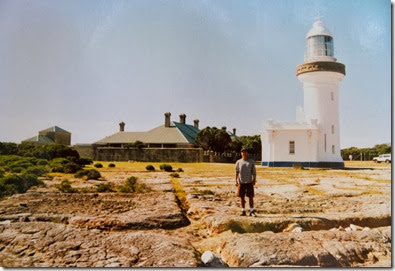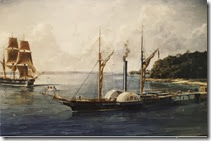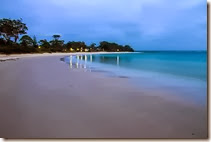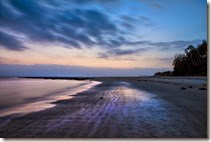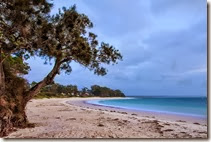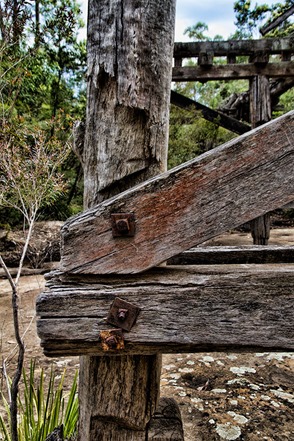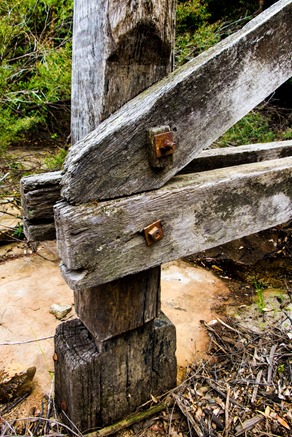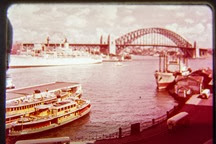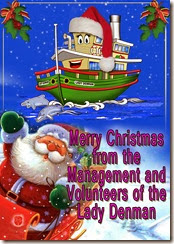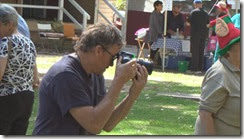I added another couple of images of this amazing area to the landscape page.
Read more
31 December 2013
Shoalhaven Landscapes
Twilight Markets
 This Saturday the 4th Jan, we have the Twilight Markets at the Museum lots of stalls and family fun…pack a picnic and sit on the Museum green and enjoy the music.
This Saturday the 4th Jan, we have the Twilight Markets at the Museum lots of stalls and family fun…pack a picnic and sit on the Museum green and enjoy the music.
Starts at 4pm -8pm
Read more
30 December 2013
Jb Arts Exhibition
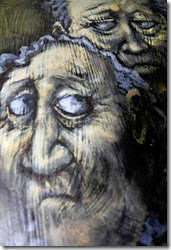 Now Showing.
Now Showing.
Currently showing in the Vera Hatton Gallery we have a collection of paintings and sculpture from a selection of Shoalhaven Artists.
There is a mixture of landscape,contemporary, and abstract artwork.
Most of the artwork is for sale, so come along and have a look and maybe buy yourself a unique piece of local artwork.
 |  |  |
These photo’s show small snippets from larger works.
28 December 2013
St Georges Basin
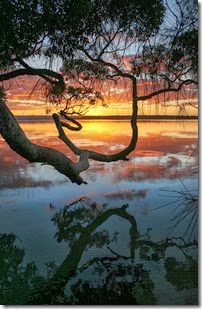 A magnificent waterway on the south coast.
A magnificent waterway on the south coast.
The traditional custodians of the land surrounding St Georges Basin were the Indigenous Australian Yuin people, who named the basin as Bherwherrae or Bherwherree.
European surveyor Thomas Florance renamed the body of water as St Georges Basin on 29 November 1827 while tracing from Jervis Bay to Conjola.
The Basins first white settlers are thought to be William and Alex Brice mid 1880's.
Some Basin history snippets.
1841 – Soon after the sale of land lots at the newly proposed township South Huskisson, there was great interest being shown in land around the basin. 16 agricultural farms of thirty-eight acres each came up for sale.
1888 – A new shipbuilding slipway was constructed by Messrs, Mathie and Suffolk on the western side of the Basin under the lee of Tallyan Point in a spot well sheltered from southerly and westerly winds. The "ways" of 12 x 12 hardwood ran some hundred feet or more into the lake and also a couple of hundred feet inland so that by the time the cradle was hauled up to it's fullest extent, there was space below the keel for a man to walk under.
The schooner Result of about 60 tons was the first vessel on the slip, "slowly rising out of the water without mishap".
1889 – A large and deadly storm hit the basin. Jagged hailstones as big as hens eggs flattened the landscape, cows backs were torn open, fruit trees were stripped bare and the following day hail 12 to 18 inches deep still remained in shallow ditches. Trees around the lake were shredded bare leaving only the main stem and branches. Many small animals and birds were found dead around the district houses had windows smashed and roofs holed.
1891- Mathie and Suffolk bought the Schooner Result at a time when the timber trade between Sydney and the Basin was in decline, They quickly built the trade up again, the Result made fortnightly trips between ports.
1900 – Plans were set in motion to build a road linking St Gerges Basin with Nowra and Milton.
1903 – Fry trout were released into the Basins lagoons and thrived.
1907 – 5-pound trout were dying as the lagoons receded because of the protracted drought affecting the area.
1909 – Captain Creswell (Commonwealth Naval Director) made a report recommending St Georges Basin as a possible future naval base. He proposed dredging the entrance to accommodate shipping.
1909 – St Georges Basin sawmill burnt down. The court could not establish if it was accidental or deliberately lit. The property was valued at 700 pounds and insured for 300 pounds.
1914 – Commercial fishing was well established with large loads shipped by lorry to Sydney.
1914 – The first telephone communication between Tomerong and St Georges Basin was established under the charge of Miss Ellmoos.
1926 – A proposal was put forward to the Fisheries Department by fishermen at St Georges Basin to destroy porpoises "which for the past 20 years have been working havoc among fish".
The industry is now faced with ruination. The Fisheries Department considered the porpoises pests.
Mr, A. W. Wood, an officer in charge of State fisheries, pointed out that there were 12 large porpoises which had never left the Inlet for 20 years. Their numbers alleged to be increasing. The local fishermen saw their chance to kill this "pest" when the porpoises were observed travelling once a week up Tallawalla Creek which was 60 yards wide and 4ft deep.
It was proposed the department should get two nets, 60 yards long and 1 feet deep, four harpoons and pay a bonus of 1 pound a head for the porpoises captured.
The department, however, could not see it's way to initiate any action, but any effort to bring about the destruction of the porpoises would be considered on its merit.
Since posting this story I have been told fishermen shot the "porpoises" around 1950.
This came from a man who as a teenager was working as a fisheman.
The basin covers a catchment area of 316 square kilometres (122 sq miles) an estimated surface area of 40.9 square kilometres (15.8 sq miles); and at an average depth of 5.3 metres (17 ft).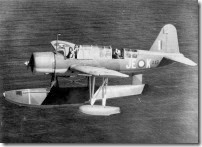 World WAR II
World WAR II
From 1943 to 1945 a squadron of 15 flying boats operated from the shores of the Basin. No.107 Squadron from Rathmines was transferred to the Basin and ran anti submarine patrols along the coast.
They were involved in an intensive search for the German U boat U-862 which sank American Liberty Ship Robert J. Walker off Moruya on 25th December 1944. This amazing image was taken by a US Navy employee or sailor and is in the public domain. - No.107 Squadron OS2U Kingfisher.
The RAAF Sea Plane Base closed down on the 1st July 1946
Fishing.
Before 2002 the waterway was heavily fished and netted by professional fishermen In 2002 it was declared a recreational fishing haven, with the government buying back all the commercial fishing licenses. This has resulted in an amazing turn around in fish populations with many species being caught these days that were considered fished out before 2002.
It has become a hot spot for fly and lure fishing, one commercial tour operator has a policy of catch and release and many huge flathead and bream are released back into the system.
The water way can be enjoyed by all, keep and eye on the weather and enjoy the sunsets from the eastern side, they are really quite amazing, so take you camera.
Ref; German U boat U862 - Read more. 1 and 2 this article contains pictures.
History is an amazing thing…
27 December 2013
Point Perpendicular Lighthouse
26 December 2013
Bullock Team
In the early 1900’s the bullock teams were used to haul wool from the Riverena, Yass, Braidwood and Nerriga areas along the road now called Trunk Road 92 to the coast and Vincentia, have you ever wondered why the road through the back of the St Georges Basin area is called the Wool Road, well now you know. Once they reached Vincentia the wool was loaded onto small boats and transported out to waiting ships, eventually a wharf was built to make loading easier.
The barque, Cygnet and the steamer, Sophia Jane, at the wharf 1843 - Another beautiful painting on display at the museum by Ian Hansen.
Eventually drought and the extended railway to Goulburn saw the port of Vincentia decline back to unimportance.
Vincentia was once part of the area known as "The Old Township" or "South Huskisson". In 1952 it was renamed Vincentia (after the battle of St Vincent) by developer Henry Halloran.
The museum has a fine world class collection on display of many of Henry Halloran’s surveying equipment.
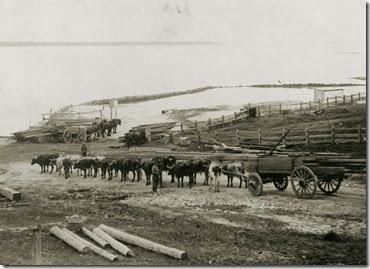 Bullock Team with a load of sawn timber at Huskisson.
Bullock Team with a load of sawn timber at Huskisson.
Spotted Gum the favoured timber.
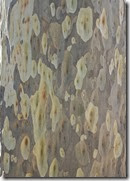
By the late 1900’s the Bullock teams were used for hauling timber to Huskisson to be used for the local boat building industry and to be shipped off to Sydney. The timber of choice for ship building was Spotted Gum readily available from the surrounding forests.
Great teams of bullocks were shackled together, the timber was cut by hand, dressed where it fell then dragged by one end out of the difficult terrain by the bullock teams, this was called snigging, they were then loaded onto Jinkers then pulled by the bullock team to Huskisson.
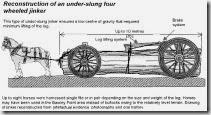 4 wheel under slung Jinker diagram.
4 wheel under slung Jinker diagram.
Ref: http://www.heritagearchaeology.com.au/Tramway.htm
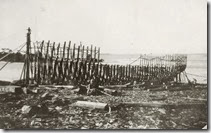 Here you see the timber being used for the Frame of the Desikoko
Here you see the timber being used for the Frame of the Desikoko
continue reading about the Desikiko
Time Travel: Visit the museum and immerse yourself in the rich history of Jervis Bay.
.
22 December 2013
Merry Christmas

It’s been an exciting 12 months at the museum,
The exhibitions have been well attended and with new staff and volunteers working along side and in co-operation with the longer serving volunteers and staff, lots of new and exciting ideas are being discussed and implemented with more to come in the new year.
One of the main objectives was to find ways of making the tourists and local become aware of what was once referred to as “Huskissons best kept secret”
This task has been assigned and taken up by the new marketing manager Clare, she has been hard at it and the results are being seen.
The shop has a new focus spearheaded by April and is looking better than ever,.
Grants to access, manage, record and clean the collection will be put to good use in the new year.
Awards have been won by the CMC and are well deserved.
The market days have been exciting and the family Fun Day was a great success.
All the volunteers need to be congratulated for doing the amazing job they do, the cleaning staff, the shop and office staff, the information centre staff, the reception staff always do a great job, the maintenance crew and market day volunteers, John in IT, where would we be without him, everyone contributes to this unique place called the Lady Denman Maritime Museum and makes it such an enjoyable place to be apart of.
On a personal note I have really enjoyed my time at the museum, I wish Id started earlier, the positive attitude and generous help you receive is very unique and I have never been involved with an organisation that has so much positive energy and I look forward to my involvement in the future.
On behalf of the staff and volunteers we wish everyone a safe and enjoyable Xmas and we will see you all again soon.
Rob
21 December 2013
Beautiful morning in Huskisson
20 December 2013
Falls Creek Bridge
| This beautiful old photo shows the original bridge across Currambene Creek on the old Princess Highway at Falls Creek. |
 |
| Many years ago the south coast area use to receive a lot more rain and the river running under the old bridge was subject to regular flooding. In the 1980’s you could travel the new concrete bridge and have an uninterrupted view of the waterfall on the western side of the bridge, sometimes there was so much water in the river the waterfall disappeared completely. |
 |
 |
 |
 |
| The construction is known as a wooden trestle bridge, probably made from locally sourced hardwood, and just like the local ship building industry that thrived in Huskisson the hardwood of choice was probably Spotted Gum, Iron Bark, or Turpentine, all well known for their durability and long life when used in construction.. |
 |
Navy Bus
Another interesting image from the museums collection.
Stretched to accommodate lots of people.
It would be a crowd pleaser if it were around today.
I can see the hot rodders and classic car junkies drooling now.
19 December 2013
Sharknet beach
I would take a guess that most people never really given much thought to why Shark Net beach has that name. Like hundreds of others, I have swum, dived and in the early days spearfished along and around Sharknet beach.
Back in the mid 19th-century sharks were a lot more prevalent in the bay than they are today. Whale processing operations were still being carried out in the bay with the blood and runoff attracting large sharks. The bay's otherwise pristine waters were still rich with fish and marine life, and largely unexploited, large sharks were a common occurrence. There are many stories on shark encounters in the bay and some are covered in this blog - To read more on the sharks in the bay type sharks into the search box in the right-hand column.
This photo above certainly illustrates the reason for the name. The concrete block supports for the structure can still be seen today.
With heavy fishing worldwide sharks have been reduced in numbers, of course, there are still sharks in the bay and sometimes large sharks have been caught and spotted off our headlands and beaches, but nothing compared to the early pioneering days.
HMAS Sydney III Propeller brings back memories.
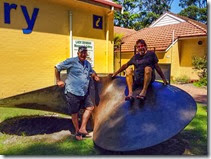 Vietman aboard the “Vung Tau ferry”.
Vietman aboard the “Vung Tau ferry”.
Two local Vietnam Veterans visited the museum today with a friend and neighbour, Paul Newman.
Paul took this photo of of Mike Dickson and Graeme Ritchie sitting on the propeller and sent us the photo with some details.|
Paul: This propeller from HMAS Sydney III delivered these two blokes to the Vietnam War, 1971. Affectionately known as the Vung Tau ferry. — with Mike Dickson and Graham Ritchie at Lady Denman Heritage Complex 2013.
Paul said they enjoyed the visit to the museum very much and were amazed at the history the museum has on display.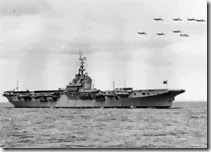 HMAS Sydney III
HMAS Sydney III
Vung Tau Ferry.
As the overall role of Australia's military increased in Vietnam so did the involvement of the RAN. The converted aircraft carrier HMAS SYDNEY had been transporting Army personnel and equipment from Australia to Vietnam since May 1965. This ship was to become a familiar sight and temporary home to some 16,000 Australian military personnel as they deployed to Vietnam or returned to Australia. Because of these trooping runs SYDNEY was affectionately known as the `Vung Tau Ferry'.
During these deployments SYDNEY was escorted and protected by other units of the RAN. On at least one such trip her escort included the aircraft carrier HMAS MELBOURNE, though MELBOURNE did not enter Vietnamese waters. She entered the operational area which extended out to 100 nautical miles.
Read More from the Vietnam Veterans Association of Australia.
Read more from the Navy.
Sydney Harbour
Merry Christmas
The Board, Management and Volunteers of the Lady Denman Maritime Museum would like to wish the 6000 plus viewers of our Blog a very Merry Christmas and a happy and prosperous 2014 New Year.
The Man Behind the Camera:
The man behind the Camera, behind the Pictures, behind the Blog.
Rob Slater maintains the Blog for the Lady Denman, Rob has a unique eye with incredible timing for that particular shot.
He likes to keep the Blog local and his Visual evidence shows that, in Robs words “there’s are a lot of hidden secrets in Jervis Bay you have just got to know where to look”.
Robs other talent is Graphic Design, he does all the Artwork for the Denman and other business houses in the Shoalhaven trading as Woollamia Signs, he has vast experience in all aspects of Exibitions working in Sydney and The War Memorial in Canberra.
In Robs spare time his passion is Rock and If you ever get a chance to call into the
Roll dancing, he is a member of the Denman, a Monitor in Reception Displays
Shoalhaven Rock and Roll group. some of Robs Photographic skills.
17 December 2013
Tomerong

Big history for a small town.
2012 - Celebrations were held in the small town to mark 150 years for the school and the post office.
The post office commenced operation on 1 March 1862 after several petitions from the locals to the Postmaster General. More information on the Post Office history is available on the Tomerong Local History site.
The current school is in the same location as the original building constructed in 1862.
Read more.
Changing tides
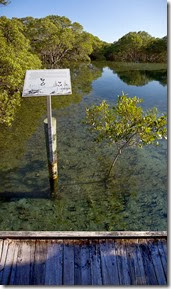
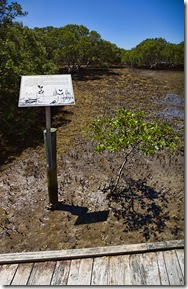 The tides comes in and the tide goes out.
The tides comes in and the tide goes out.
The ebb and flow of the tides makes the mangrove forest a fascinating place to sit and observe.Take a walk along the long winding elevated walkway at high tide and then again at low tide and it presents the the observant a completely different world altogether.
It’s amazing how many species of fish you will see amongst the mangrove roots and across the sand flats and then at low tide the sand is alive with crabs and crustaceans all scurrying madly about looking for food between the tides.
These unique forests play a vital roll in the health of the rivers ecology by consolidating the sand and providing a safe home for juvenile fish, crustaceans and shell fish. They protect the river banks in times of floods by slowing the speed of the water and dissipating it’s force. They provide a rich source of minerals and habitat for water birds and many more important things.
Mangrove forests are under threat all over the world and are protected in Australia, so please look after and respect this fragile environment.
The walkway is accessible by following the signs at the eastern end of the pond or ask the museum staff for directions, they will be more than happy to help.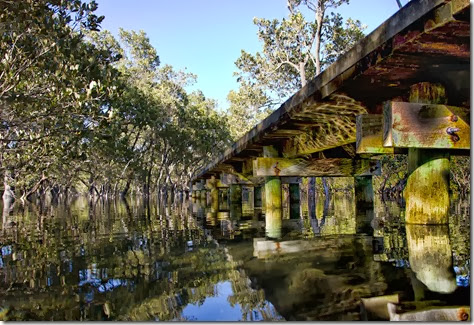
Volunteers Christmas lunch
All the volunteers that have been working so hard all year were treated to a nice luncheon in the pavilion today.
The staff did most of the cooking and food preparation, of course some of the volunteers helped because that’s what they do.
It was a nice way of thanking the volunteers and a chance for everyone to have a chat and a laugh.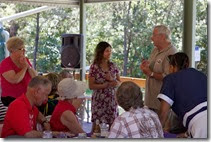
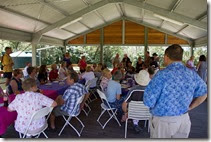
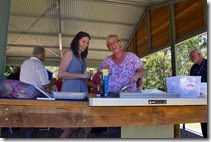
Flintlock pistol
One of many remarkable items on display from the collection.
When this pistol was developed it was an amazing advance in technology and quickly became the weapon of choice by the navy and pirates. It revolutionalised ship to ship and land based combat.
It was loaded with a metal ball wrapped in a piece of fabric which was pushed down the barrel with the gun powder then rammed home with a metal rod that you can see in this picture attached to the bottom of the barrel. The hammer was then pulled back (cocked) and the trigger squeezed causing a small spark to be created by the flint held in place by a small grip, this ignited the gunpowder and fired the pistol. As you can imagine the injuries the metal ball would inflict were severe.
Moisture was the main problem stopping the powder from igniting, The hammer was usually pulled back half way (half cocked) in preparation for firing, sometimes this would cause the gun to pre fire which is where the name “going off half cocked” came from.
Video of a pistol being loaded and fired.



